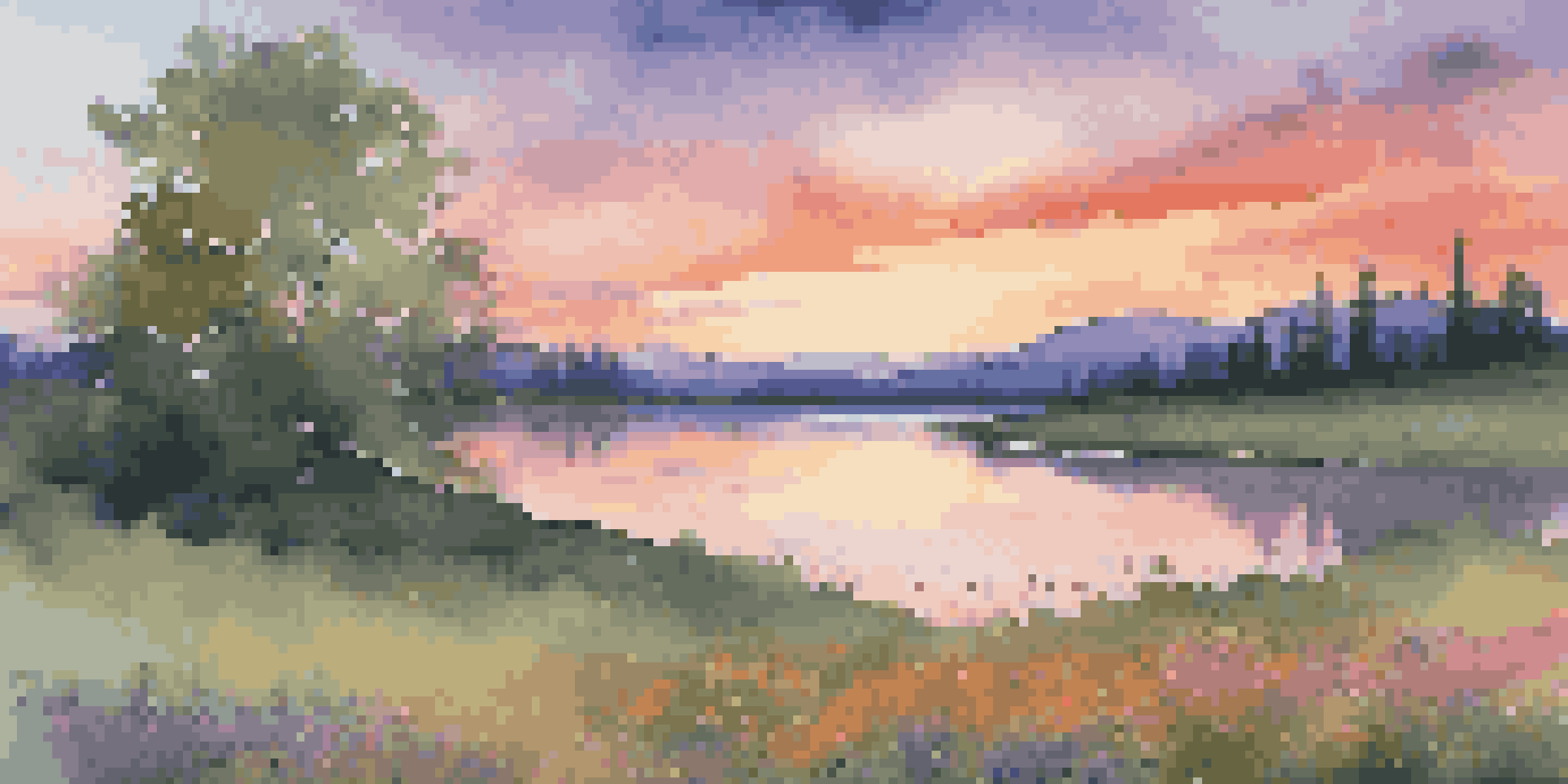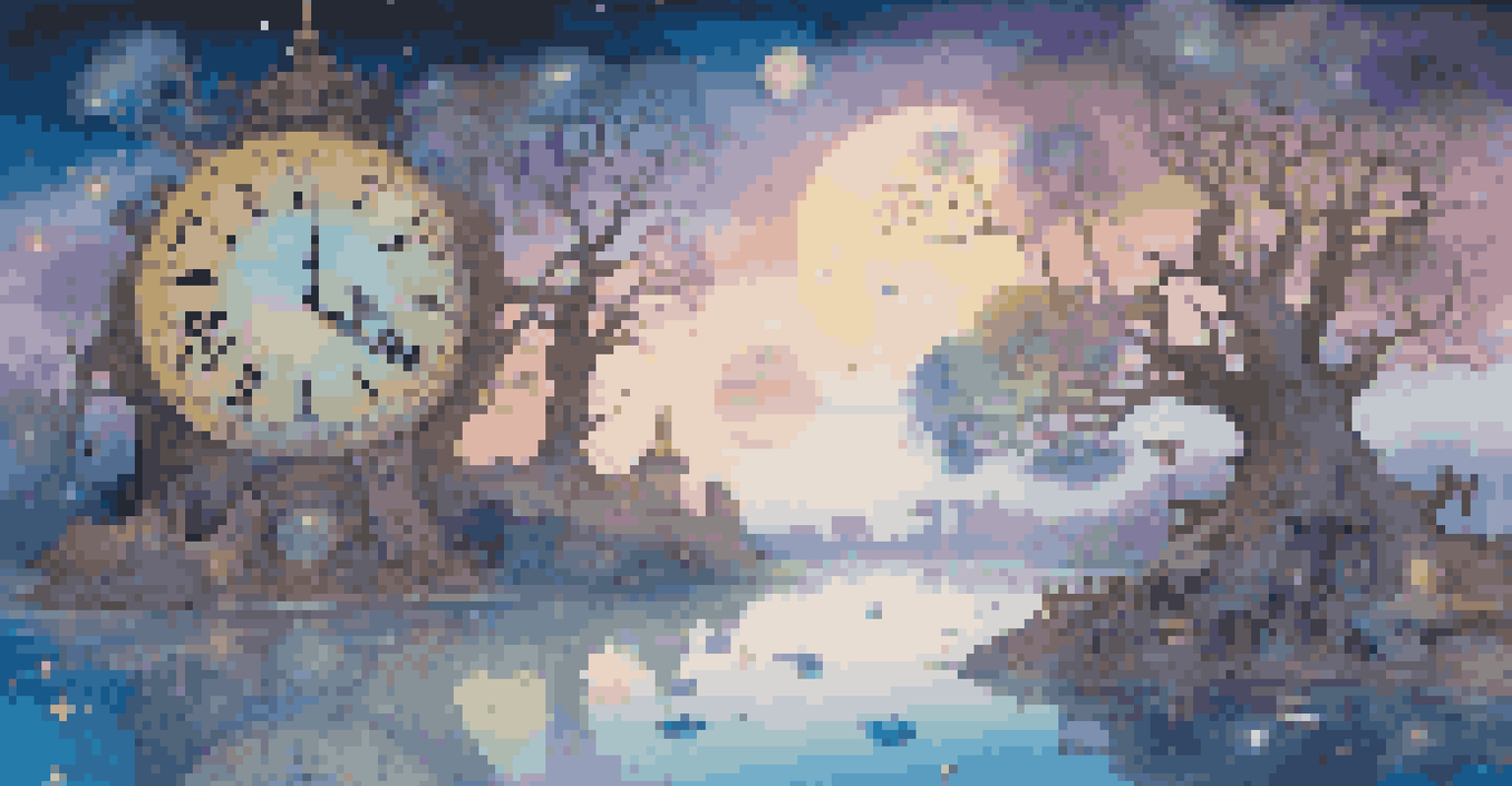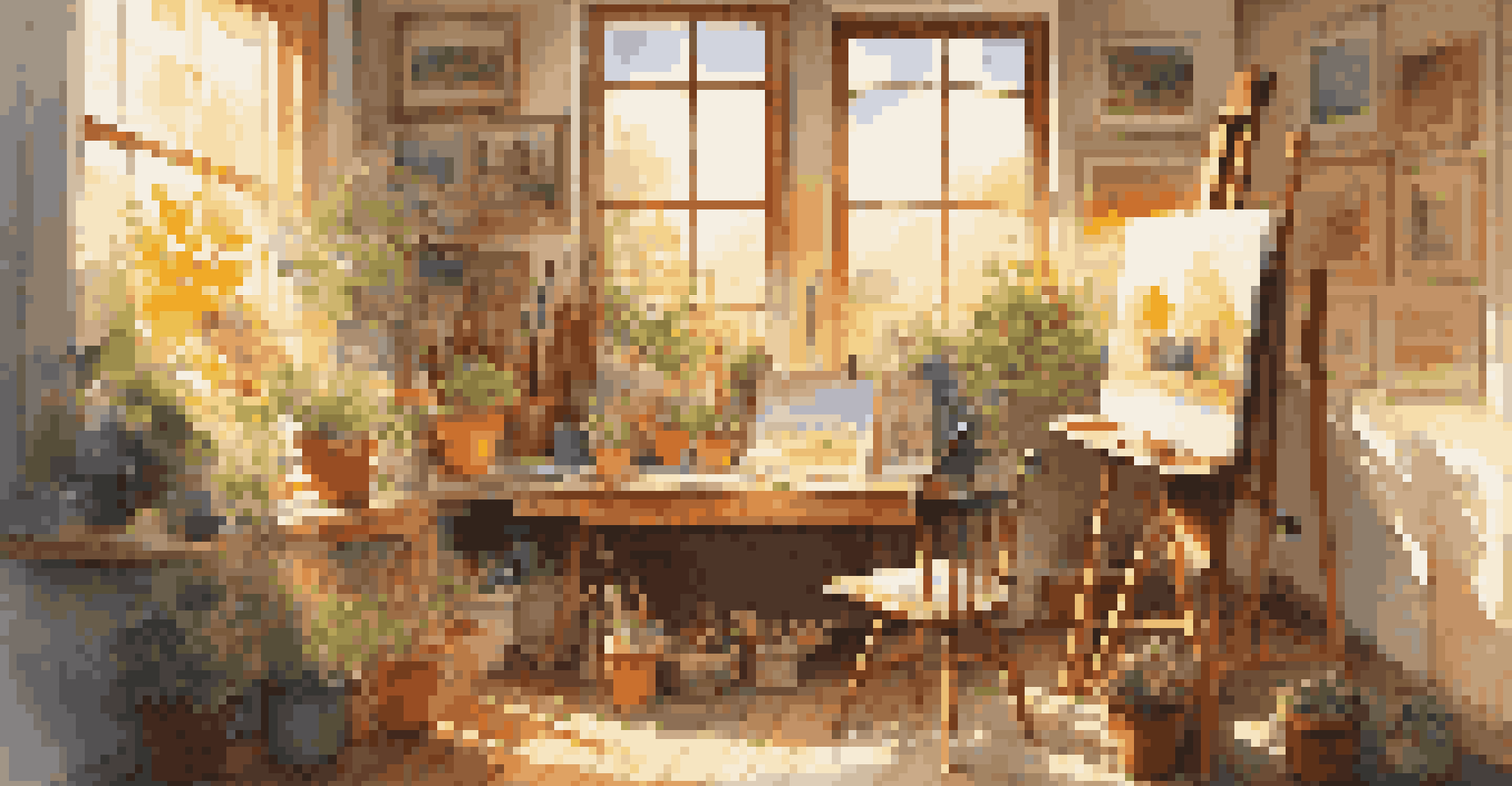Memory and Creativity: The Role of Imagination in Art

Understanding Memory's Role in Creative Expression
Memory serves as the foundation of our creative expression, influencing how we perceive and interpret the world. Each experience we accumulate becomes a building block for our imagination, shaping the art we create. For instance, a painter may draw upon childhood memories of nature, translating those vivid recollections into vibrant landscapes.
Memory is the treasure house of the mind wherein the monuments thereof are kept and preserved.
When artists tap into their memories, they often evoke emotions that resonate with their audience. This connection can turn a simple painting or sculpture into a shared experience, allowing viewers to engage deeply with the work. Just think of how a familiar scent can transport you back to a specific moment in time; similarly, art can act as a time capsule of memories.
Moreover, memory isn't just about recalling past events; it also involves reconstructing and reinterpreting those experiences. This process allows artists to blend different memories, giving rise to unique perspectives and innovative ideas. Therefore, the interplay between memory and creativity is not just crucial—it's essential for artistic growth.
The Power of Imagination in Artistic Creation
Imagination is often seen as the spark that ignites creativity, enabling artists to envision what doesn't yet exist. It allows for the exploration of new concepts, styles, and forms. When an artist imagines, they can break free from the confines of reality, creating works that challenge, inspire, and provoke thought.

For example, surrealist artists like Salvador Dalí used their imagination to create fantastical scenes that blur the lines between reality and dreams. Their ability to visualize extraordinary concepts has led to some of the most iconic pieces in art history. This illustrates how imagination can push creative boundaries, leading to revolutionary artistic movements.
Memory Fuels Creative Expression
Memory serves as the foundation of creativity, shaping how artists perceive the world and influence their work.
Furthermore, imagination enables artists to experiment with different mediums and techniques, expanding their creative toolkit. Whether it's a writer conjuring new worlds or a sculptor reshaping materials, imagination fuels the artistic process. It's this limitless potential that makes art not only a reflection of reality but also a glimpse into what could be.
How Personal Experiences Shape Artistic Vision
Every artist's unique background and experiences influence their creative vision. Personal stories, cultural heritage, and life events often inform the themes and subjects they choose to explore. This perspective adds depth to their work, allowing for a rich tapestry of emotions and ideas.
Imagination is the highest kite one can fly.
Consider the music of artists like Billie Eilish, who draws heavily from her own experiences and emotions. Her introspective lyrics resonate with many, showcasing how personal narratives can connect with broader audiences. This authenticity not only enhances the emotional impact of their art but also invites viewers into the artist's world.
Moreover, artists often channel their experiences into their creations as a form of catharsis. Creating art can be a therapeutic process, helping them make sense of their feelings or navigate complex situations. This connection between personal experience and creativity underscores the profound impact that memory and imagination have on artistic expression.
Memory as a Catalyst for Innovative Ideas
Memory has the remarkable ability to foster innovation by allowing artists to revisit and reinterpret past influences. By recalling elements from their artistic journey, they can blend old ideas with new concepts to create something entirely fresh. This practice is akin to a chef combining traditional recipes with modern techniques to craft a unique dish.
For instance, filmmakers often reference classic cinema in their work, infusing nostalgia with contemporary themes. This blending of past and present not only pays homage to earlier influences but also creates a dialogue between different eras of art. Such innovation can lead to exciting new genres and styles that captivate audiences.
Imagination Sparks Innovation
Imagination allows artists to explore new concepts and break free from reality, leading to groundbreaking artistic movements.
Furthermore, revisiting memories can spark unexpected connections, leading artists to explore uncharted territories in their work. This process of synthesis, where old meets new, is vital for creative evolution. As artists continue to engage with their memories, they unlock a wealth of possibilities for innovation.
Dreams and Imagination: A Well of Inspiration
Dreams offer a fascinating glimpse into the depths of our imagination, often providing inspiration for artists. Many renowned creatives, including poets and painters, have turned to their dreams for ideas, using the surreal nature of dreams to fuel their work. This connection between dreams and creativity showcases the boundless potential of the imaginative mind.
Take, for instance, the famous artist Vincent van Gogh, who often painted vivid images inspired by his dreams. His ability to translate dreamlike visions into his artwork showcases how the subconscious can enhance creative expression. This relationship between dreaming and creating serves as a powerful reminder of the unseen influences on artistic vision.
Moreover, dreams can serve as a way for artists to process their thoughts and emotions. By tapping into their subconscious, they may uncover deeper truths about themselves or the world around them. This exploration of dreams not only enriches their artistic output but also reinforces the idea that imagination is a vital source of inspiration.
The Interplay of Memory, Imagination, and Emotion
The relationship between memory, imagination, and emotion is a dynamic one that fuels creativity. Artists often draw upon their emotional experiences, using them as a lens through which to filter their memories and imagination. This interplay enables them to convey complex feelings in their work, making art a powerful means of communication.
For example, a writer might recall a painful memory and use that as a foundation to craft a poignant story. The emotional weight of their experiences enriches the narrative, allowing readers to connect on a deeper level. This transformation of personal emotion into art exemplifies how intertwined these elements truly are.
Personal Experience Enhances Art
Every artist's unique background and experiences add depth to their work, connecting personal stories with broader audiences.
Additionally, engaging with memories and emotions can lead to a deeper understanding of oneself, a journey that can be both enlightening and cathartic. By channeling their feelings into their creations, artists often find clarity and healing. This cyclical nature of memory, imagination, and emotion underscores the profound impact of these elements on artistic expression.
Embracing the Creative Process: A Journey of Discovery
The creative process is often a journey of discovery, where memory and imagination play significant roles. As artists embark on their creative endeavors, they engage with their past experiences and imaginative visions, leading to unexpected outcomes. This exploration allows for growth and innovation, as each step unveils new insights.
Artists may find that their initial concept evolves as they delve deeper into their memories and dreams. This fluidity highlights the importance of remaining open to change during the creative process. Just as a traveler adapts their itinerary based on new experiences, artists learn to navigate their creative paths with flexibility.

Ultimately, embracing this journey fosters a sense of excitement and possibility. Each piece of art becomes not just a product, but a reflection of the artist's exploration of memory and imagination. This approach encourages both artists and audiences to appreciate the beauty in the creative process, celebrating the discoveries made along the way.